Exhibitions 2017
Jews, Christians and Muslims
9 December 2017 to 4 March 2018
Today’s scientific world rests upon the shoulders of the Jewish, Christian and Muslim scholars who translated ancient scriptures in the Middle Ages; first in the Middle East into Arabic, and then in Europe – starting in southern Italy and Spain – from Arabic into Latin. The significance of this transfer of knowledge cannot be overstated, even if it wasn’t the only strand of transmission. The arrival of Aristotle’s writings in medieval Europe, for example, was possible largely thanks to this translation activity.
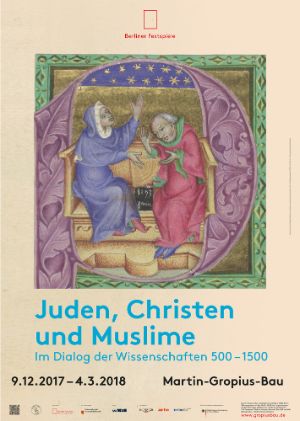
Exhibition poster “Jews, Christians and Muslims. Scientific Discourse in the Middle Ages 500-1500”. Image: Two astronomers with instrument (Quadrant)
Image © Austrian National Library
Wenzel Hablik – Expressionist Utopias
2 September 2017 to 14 January 2018
Utopian architectural designs, expressionist interiors, fantastic worlds of colour – all of this is only a fraction of the work of Wenzel Hablik (1881–1934), who dedicated himself to a synthesis of the arts as a universal artist. Hablik is considered one of the most important representatives of the German expressionist avant-garde in architecture and design.

Exhibition poster “Wenzel Hablik – Expressionist Utopias. Paintings, Drawings, Architecture”. Image: Freestanding Dome With Five Mountain Tops as Base, 1918/23/24
Image © Wenzel-Hablik-Stiftung, Itzehoe
Ed Atkins “Old Food”
29 September 2017 to 7 January 2018
Ed Atkins is one of the most distinctive representatives of a generation of artists explicitly responding to digital media’s ever-increasing ubiquity; Atkins creates worlds of crazed artificiality and desperate realism. His computer-generated videos feature shabby, lonely protagonists with disarming and marked fidelity. His animations demonstrate their digital constitution – their near-total artifice – even as they simultaneously strive for a disturbing level of lifelikeness. Atkins’ works get under the viewer’s skin, rendering a queasy corruption of substance, both material and concept – just as the idea of “old food” raises a suspicion of use squandered, of goodness spoiled.
Regina Schmeken
29 July to 19 November 2017
Regina Schmeken began taking photographs of the NSU crime scenes in early 2013. The victims were found on the ground brutally executed by right-wing terrorists. With her new exhibition project “Bloody soil. Scenes of NSU crimes” in the Bundeswehr Museum of Military History in Dresden, she sought to commemorate the victims of the murders and to confront the public with places that, at first sight, seem to bear no traces of acts of violence.
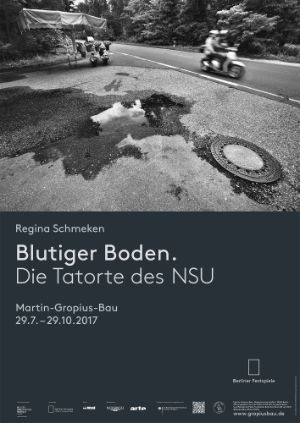
Exhibition poster “Regina Schmeken. Bloody soil. Scenes of NSU crimes”. Image: Enver Şimşek (38) 09.09.2000 Nürnberg
Image © Regina Schmeken, 2015
The Luther Effect
12 April to 5 November 2017
To mark the 500th anniversary of the Reformation, the Deutsches Historisches Museum invited you on a journey leading through five centuries and four continents. The first exhibition, “The Luther Effect”, showed the diversity and historical impact of Protestantism, but also its potential for giving rise to conflicts in the world. The Deutsches Historisches Museum presented the exhibition in the Martin-Gropius-Bau on an area of some 3,000 m² and brought together outstanding exponents from national and international lenders, many of which have never before been displayed in Germany.
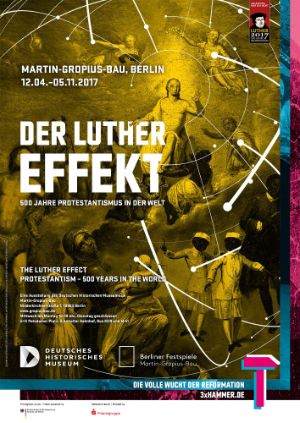
Exhibition poster “The Luther Effect. Protestantism – 500 Years in the World”
Lucian Freud: Closer
22 July to 22 October 2017
Lucian Freud (1922–2011) is one of Great Britain’s most important painters. His figurative works are among the masterpieces of the 20th century. His fame is owed mainly to his portraits of people and animals, which he observed in an almost scientifically precise manner and then captured on canvas or paper.
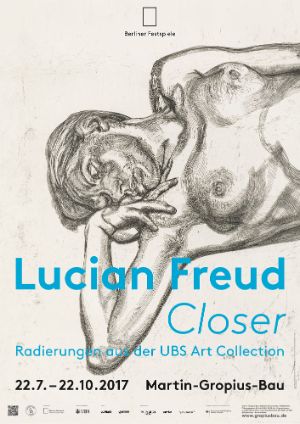
Exhibition poster “Lucian Freud: Closer. Etchings from the UBS Art Collection”. Image: Lucian Freud: Head and Shoulders of a Girl, 1990
Image © The Lucian Freud Archive/Bridgeman Images UBS Art Collection
Immersion: Limits of Knowing
1 to 31 July 2017
“Limits of Knowing“ explored the utmost borders of the rational knowledge. Inspired by agnoseology – the “theory of unknowability” – the interdisciplinary programme invited you to float between reason and imagination. States that are less popular in our knowledge-based society, like anticipation, premonition or bewilderment, can serve as a way into artistic, scientific and philosophical issues.
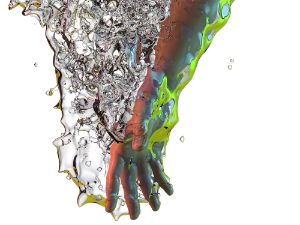
Franz Kafka. The entire Trial
30 June to 28 August 2017
More than 100 years after it was written, the entire manuscript of Franz Kafka’s famous novel “The Trial” is going on show at the Martin-Gropius-Bau in Berlin. It will be displayed page by page in the order given to it by Kafka’s friend, executor and editor, Max Brod. The Berlin presentation was based on the 2013/2014 exhibition “The Entire Trial” at the Museum of Modern Literature in Marbach; the manuscript is part of the collections of the German Literature Archive in Marbach.
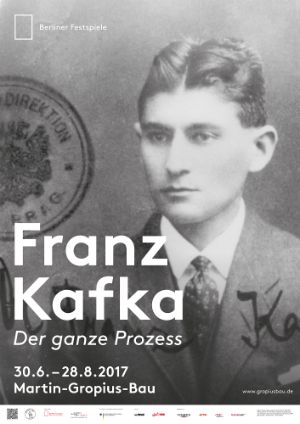
Exhibition poster “Franz Kafka. The entire Trial”. Image: Passport photograph, Kafka about 32 years old, 1915/16
Image © Archiv Klaus Wagenbach
Foto.Kunst.Boulevard.
5 May to 9 July 2017
Art as a universal good increasingly conquers the media landscape. The exhibition presented documentary and staged photographs, contemporary history and everyday life, heads and curiosities from the tabloid journalism of the last years. 26 renowned photographers were involved: Lars Berg, Daniel Biskup, Michel Comte, Esther Haase, Attila Hartwig, Meiko Herrmann, Kiki Kausch, Tom Lemke, Kevin Lynch, Christoph Michaelis, Andreas Mühe, Konrad R. Müller, Peter Müller, Nigel Parry, Thomas Rabsch, Oliver Rath, Paul Ripke, Holde Schneider, Martin Schoeller, Florian Sommet, Andreas Thelen, Antoine Verglas, Wolfgang Volz, Ellen von Unwerth, Wolfgang Wilde, Frank Zauritz.
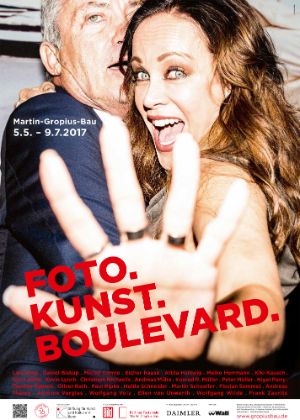
Exhibition poster “Foto.Kunst.Boulevard.”
Juergen Teller. Enjoy Your Life!
20 April to 3 July 2017
Juergen Teller is one of the world’s most sought-after contemporary photographers. His works, many of which take the form of extensive series, are published in books, magazines and exhibitions. Since then his pictures have straddled the interface of art and commercial photography. His stylistic device of choice is the portrait. Working in the areas of music, fashion and celebrities as well as everyday scenes and landscape, he draws on his intuitive feel for people, situations, milieus and clichés to create images of great immediacy and deceptive simplicity.
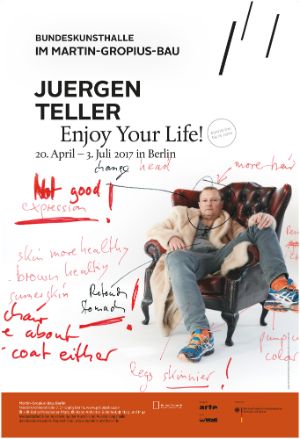
Exhibition poster “Juergen Teller. Enjoy Your Life!”. Image: Juergen Teller. Self portrait, London 2015
© Juergen Teller
Friedrich Kiesler: Architect, Artist, Visionary
11 March to 11 June 2017
Friedrich Kiesler, born 1890 in Czernowitz (Chernivtsi), died 1965 in New York, was an Austro-American architect, stage designer, designer, artist and theoretician. Martin-Gropius-Bau devoted an exhibition to the universal artist Frederick Kiesler, in which his complex oeuvre is presented in all its facets for the first time in Germany. Central projects, important artistic friendships and collective works illustrated his importance in 20th-century architecture and art history, and mapped out his environment.

Exhibition poster “Rediscovered Modern I. Friedrich Kiesler: Architect, Artist, Visionary”. Image: Friedrich Kiesler during his work on the sculpture “Bucephalus”, around 1964
Photo: Adelaide de Menil © Friedrich Kiesler Foundation. Poster design Scholz & Volkmer